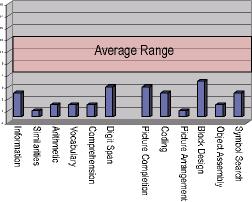| ESE424 : The Class : Students with Mild Disabilities : Mental Retardation : Assessment | |||||
Assessment of Mild Mental Retardation?
This topic is subdivided into two major themes:
- Formal Assessment
- Informal Assessment
Formal assessment of mild mental retardation
By formal assessment, I mean using standardized, norm-referenced tests to compare a child's performance to a much larger, normally distributed population of children of the same age. Normative or formal assessment is used to determine eligibility for special education services, identify and pinpoint a specific disability, and assist in educational planning.
Formal assessment is a complex, and multifaceted process. For persons with mild mental retardation, this process involves three specific steps, each directly related to one of the criterions identified in the definitions of mental retardation
Review definitions of mental retardation
Formal
Assessment Procedrues forMental Retardation (the AAMR way)
Scroll about 2/3 of the way down the page
to the section titled "How is mental retardation diagnosed? "
Formal assessment under IDEA also requires that the assessment team gather information under three areas to find a child eligible as mildly mentally retarded.
- intelligence - document significantly subaverage intellectual performance
- adaptive behavior - document a deficit in at least two adaptive behavior areas
- educational deficits - document that the mental retardation effects school performance.
 Tommy
Q. Public
Tommy
Q. Public
At this point, I would like to introduce Tommy, a hypothetical young boy with mild mental retardation. Tommy just completed his formal psychoeducational evaluation to determine his continued eligibility for special education services. We will use his psychometric summary to look at assessment processes for children with mild mental retardation. This is what his summary looks like.

Area 1: Significantly Subaverage Intellectual Functioning
For a child to be identified as having mild mental retardation (MIMR), the assessment team must document significantly subaverage intellectual performance. Intelligence is assessed using standardized tests of intellectual functioning. You will remember that for MIMR, this would be an IQ score between 55-70. The two most commonly used tests are the Stanford-Binet and the Wechsler Intelligence Scales. The psychologist that conducted Tommy's evaluation used the Wechsler Intelligence Scales for Children (WISC).
Information about the WISC
For a child with mild mental retardation, you would expect to see a generalized depression in intellectual performance across test scales. When graphed, Tommy's profile fits this pattern.

Note the relatively flat peformance across subtests. All scores are significantly below the average range of intellectual functioning, thus, meeting this diagnostic requirement for the category of mild mental retardation.
Compare this profile with a child who has a learning disability
Area 2: Adaptive Behavior
The second area of assessment concern is adaptive behavior. Here, a child with mental retardation would need to demonstrate a significantly deficit in two or more areas. Adaptive behaviors can include a variety of skills that help the person meet the standards of personal independence and social competence expected of children (or adults) their age. These skills allow the person to function independently in society.
As you can see from Tommy's profile, he meets the requirement for deficits in daily living skills, socializtation, and is very close to a significant deficit in communication. His composite score is well within the range necessary for mild mental retardation.
Academic Achievement
The last element in the formal assessment process would be measures of academic performance. Since any child with a disability cannot receive special education services without clear evidence that the impairment(s) effect the child's ability to learn, Tommy's psychologist administered the Weschler Individual Achievement Test (WIAT).
Again, you can see that Tommy's profile shows depressed academic performance across the board, making him eligible for special education services as a child with mild mental retardation.
Informal Assessment
Informal assessment involves non-standardized, often teacher or therapist made, materials. These tools are used to supplement and extend formal assessment results. The results of informal tests are used to assist the educational team plan instruction and monitor the child's educational progress.
Teachers have many ways to gather informal data
- student records
- student work
- prereferral information
- observation
- interviews
For more information about informal testing techniques and strategies click on the link below
Assessing Children for the Presence of a Disability
Once you have completed this lesson, you should:
Go on to
Activity 3: Adaptive Behavior?
or
Go back to The Class
Page
E-mail the instructor at Larry.Gallagher@nau.edu
Web site created by the NAU OTLE Faculty Studio
Copyright 1998 Northern Arizona University
ALL RIGHTS RESERVED
